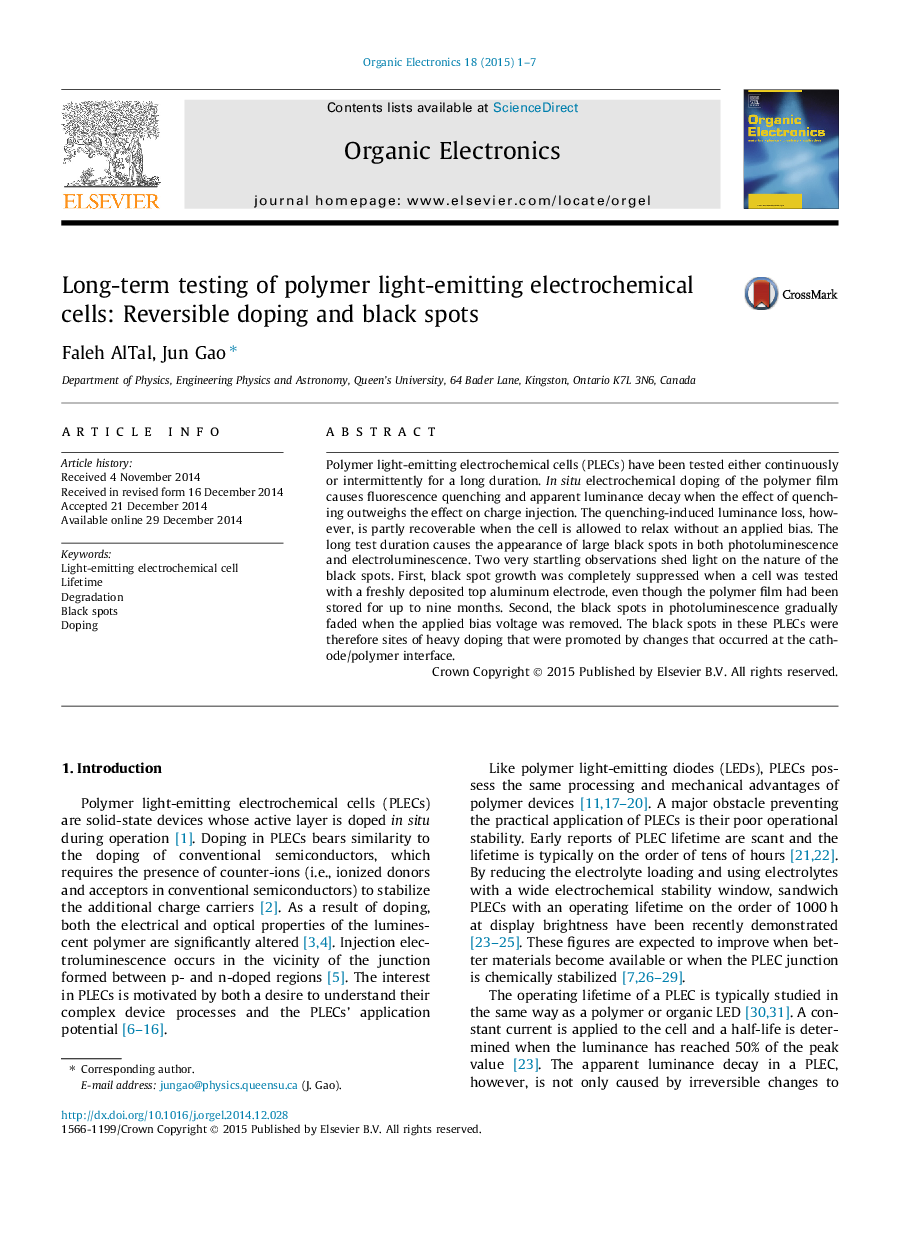| Article ID | Journal | Published Year | Pages | File Type |
|---|---|---|---|---|
| 1267218 | Organic Electronics | 2015 | 7 Pages |
•Polymer light-emitting electrochemical cells (PLECs) have been tested both intermittently and continuously for a long duration.•The reversible electrochemical doping process is a key factor that dictates the observed cell characteristics over time.•Doping causes fluorescence quenching and the apparent luminance decay, which are partly recoverable when the cell is allowed to relax.•Surprisingly, the formation of black spots is caused by chemical changes that have occurred only at the cathode interface during storage, and the black spots are in fact manifestation of localized heavy doping seeded by the chemical changes.
Polymer light-emitting electrochemical cells (PLECs) have been tested either continuously or intermittently for a long duration. In situ electrochemical doping of the polymer film causes fluorescence quenching and apparent luminance decay when the effect of quenching outweighs the effect on charge injection. The quenching-induced luminance loss, however, is partly recoverable when the cell is allowed to relax without an applied bias. The long test duration causes the appearance of large black spots in both photoluminescence and electroluminescence. Two very startling observations shed light on the nature of the black spots. First, black spot growth was completely suppressed when a cell was tested with a freshly deposited top aluminum electrode, even though the polymer film had been stored for up to nine months. Second, the black spots in photoluminescence gradually faded when the applied bias voltage was removed. The black spots in these PLECs were therefore sites of heavy doping that were promoted by changes that occurred at the cathode/polymer interface.
Graphical abstractFigure optionsDownload full-size imageDownload as PowerPoint slide
